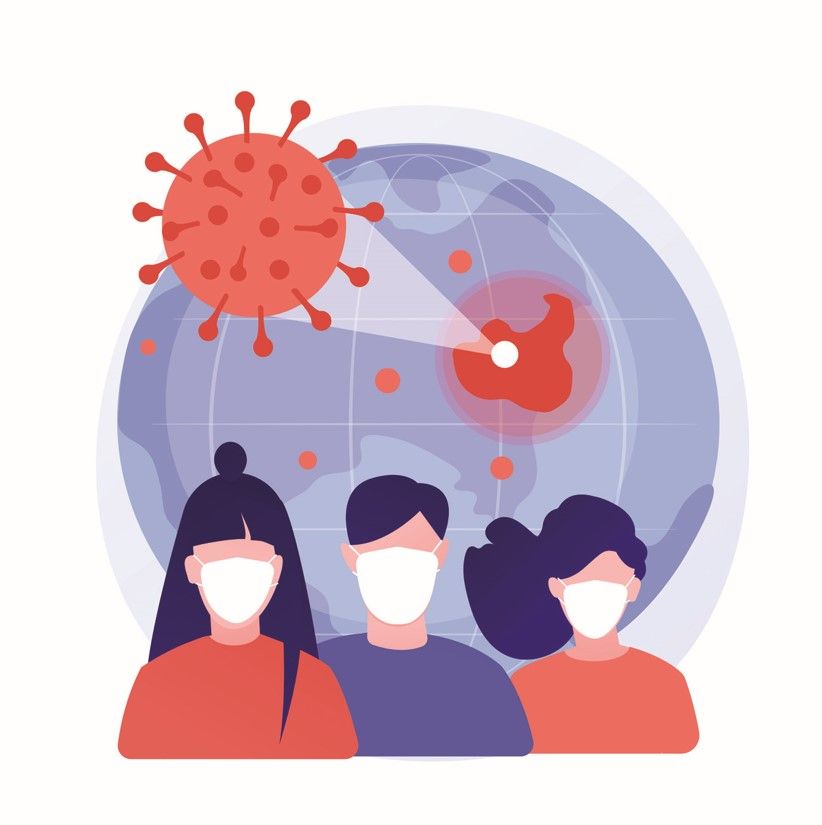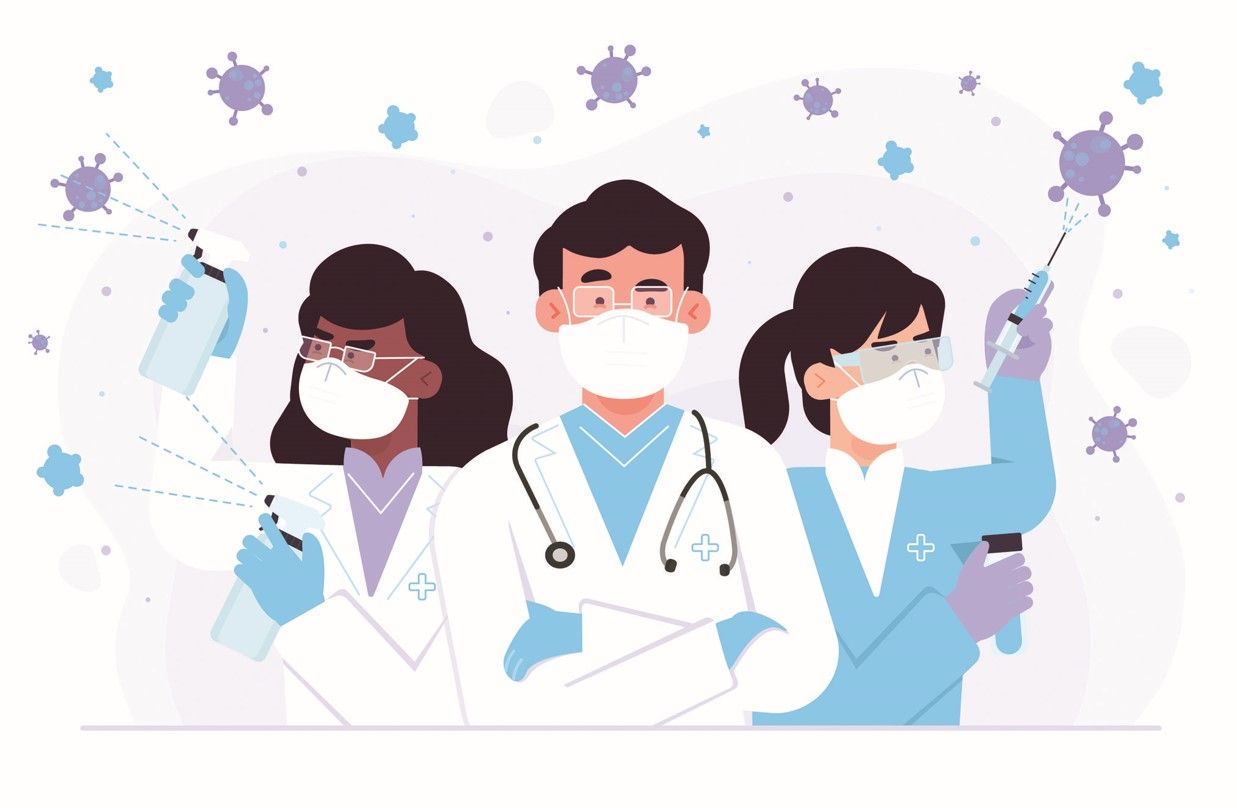The latest on Covid-19
And why you don't want to get long Covid
In the last few weeks, more and more people have been consulting me for a positive Covid-19 antigen test. Thankfully, most of them are vaccinated and so their Covid-19 course is mild and they recover quickly. Covid-19 continues to circulate in the community and we expect small increases in cases from time to time. However, these periodic upticks in cases are not enough to significantly impact healthcare capacity and so there is no need to panic.
The dominant variant at this time is JN.1 which is still an Omicron sublineage. Current vaccinations and medications such as remdesivir and nirmatrelvir/ritonavir (Paxlovid) still work well against it. Only those with comorbid conditions and those above 65 years old will need to have treatment if they have mild or moderate disease (using molnupiravir, Paxlovid, or short course remdesivir) to prevent hospitalization. Those with severe disease will need to be hospitalized and treated with steroids and remdesivir as appropriate. A new JN.1 sublineage called KP.2 is slowly taking over in the US, but it does not seem to be more virulent and it is expected that current vaccines and treatment will continue to be effective. The latest booster in the US is a monovalent vaccine based on JN.1 and will likely be made available to vulnerable populations later in the fall season.

In the Philippines, there is still no consensus on the need for boosters beyond the bivalent vaccines that were rolled out nearly two years ago. Monovalent boosters were rolled out in the US in 2023 but did not make it here. Given the initial vaccination and boosting rates coupled with continued circulation of the virus, protection from severe disease in our population still seems to be robust. Updated vaccines may be of benefit to vulnerable populations but it is unclear if drug companies will still try to bring them in given the issues with storage at very low temperatures and apparent lack of interest. The World Health Organization, the Department of Health, and the Philippine Society for Microbiology and Infectious Diseases continue to evaluate the overall impact of updated boosters based on the latest data. There does seem to be certain populations that can benefit but it is a moot point without a local supplier. Some of my patients who have the means to travel are accessing these vaccines in the US where they have to pay at least $200 out of pocket for the shot. Personally, I have not taken the latest monovalent vaccine as I am not part of the vulnerable population.
There is a bit more urgency in getting Covid-19 vaccines for young children who may not have gotten the primary series and/or boosters because they were too young to qualify during the mass vaccination rollout. While WHO has declared that countries may decided which of their younger populations should be given vaccines, there is increasing evidence that unvaccinated children can be impacted by Covid-19 beyond the relatively lower risk of severe disease. Specifically, a syndrome known as multisystem inflammatory syndrome in children (MIS-C) can adversely affect the health of young children. The risk for MIS-C can be significantly decreased with vaccination and appropriate boosting.

Despite Covid’s transition into endemicity, it is important to recognize that even with vaccination and good treatment, a Coovid-19 infection can still have a significant impact on one’s health. With less and less people wearing masks, more people are bound to catch Covid-19 as it circulates. Even if doesn’t kill or land someone in the hospital, the so-called long Covid syndrome can occur in anyone who gets infected.
What exactly is long Covid? As more and more people were infected with Covid-19 in the early days of the pandemic, a subset of patients was not fully recovering even after the virus had run its course. Some patients continued to have symptoms for more than four weeks after infection, particularly among those who had severe disease. These symptoms included shortness of breath on activity, a nagging cough, fatigue, difficulty concentrating, recurrent headaches, light-headedness, joint pains, changes in taste and smell, and depression. The US Centers for Disease Control (CDC) and its partners attempted to classify these patients with seemingly disparate symptoms into a catch-all syndrome known as long Covid in order to better study the phenomenon and how best to treat it. Other terms used for long Covid syndrome are post-Covid conditions, long-haul Covid, post-acute Covid-19, long-term effects of Covid, and chronic Covid. Post-acute sequelae of SARS CoV-2 infection (PASC) is used to refer to a subset of long Covid.
As early as July 2021, the US recognized long Covid as a condition that could result in a disability under the Americans with Disabilities Act. This acknowledges that long Covid can be debilitating and needs to be better understood in order to prevent and treat it. There is currently no single test to determine whether someone has long Covid and the definition of long Covidcontinues to evolve. What is clear is that each Covid-19 infection carries a risk for long Covid. While those with severe Covid-19 are more likely to develop long Covid, patients with mild infections can also end up with long Covid.
So how does one avoid long Covid? The most obvious way to do so is to not get infected or reinfected with COVID-19 in the first place. The best way to avoid infection is to wear a good quality mask, which unfortunately is not something that is done by many people nowadays. Masks are still useful especially for the vulnerable population and should be considered during times when there are a lot of respiratory illnesses and when one is in enclosed, crowded areas with poor ventilation. Covid-19 vaccination in general decreases the risk of long Covid. It is not clear how many boosters are optimal but there is already an effect even with just the primary series. Finally, there is emerging data that early treatment with antivirals for vulnerable populations (elderly, those with comorbid conditions) significantly decreases the risk of long Covid. If you do get a respiratory illness and you belong to the vulnerable groups, there is still utility on doing a Covid-19 test and seeing your doctor for treatment as soon as possible.
If despite all precautions, you still get long Covid, all is not lost. The best doctor to see usually depends on what symptom is the most prominent. People who are short of breath and need oxygen support should see a pulmonologist. People with heart symptoms can see a cardiologist. Those with smell and taste disorders should see a neurologist. In many cases, a multidisciplinary approach with your internist and relevant specialists has the best chance of getting you back to a good quality of life. Ongoing research continues to look for new treatments and interventions to fight this emerging problem. Talk to your doctor to understand your best chances for recovery.